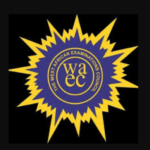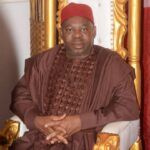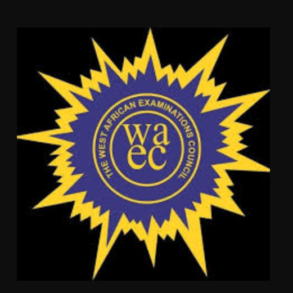Education inputs are the means used in an education system to achieve education objectives, such as: the number of teachers, school facilities, teaching materials supplies and the cost and level of financial resources used for education.
In education, there are a couple of inputs involved. First, we have the teachers. Teachers are like tools for knowledge transfer. Without them being in the educational process, it would be hard to attain the desired educational outputs. Administrators are also educational ‘inputs’ because they inspire the process of getting educational goals.
Lastly, there are the facilities that allow learners to get educated, as well as the supplies the learners require to fulfill their educational goals.
The anticipated educational ‘outputs’ are skills and knowledge and are directly attached to students. When these outputs are not satisfactory, the efficiency of inputs could be evaluated to determine which among them did not contribute optimally.
Teacher
According to Korth, Erickson and Hall (2009), a teacher is simply one who teaches or educates others. Zango, Sani and Danlami (2010) disclosed that a teacher or teachers embrace all those persons in schools who are responsible for the education of pupils or students.
However, a teacher could be seen as an educated and experienced professional who guides learners in the teaching and learning processes.
Informally the role of a teacher can be assumed by anyone. For instance, when showing a colleague how to perform a specific tasks in some countries, teaching young people of school age may be carried out in an informal setting, such as within the family (homeschooling), rather than in a formal setting such as a school or college. Some other professions may involve a significant amount of teaching (e.g. youth worker, pastor).
In most countries, formal teaching of students is usually carried out by paid professional teachers. Emphasis is therefore placed on those whose main duty is to teach others in a formal education context, such as at a school or other place of initial formal education or training.
Contributions
Teachers perform varieties of duties or tasks depending on socio-cultural background. Teachers may provide instruction in literacy and numeracy, craftsmanship or vocational training, the arts, religion, civics, community roles, or life skills.
Formal teaching tasks include preparing lessons according to agreed curricula, giving lessons, and assessing pupil progress.
Teachers’ callings go beyond formal teaching or classroom activities. Outside of the classroom, teachers may accompany students on field trips, supervise study halls, help with the organization of school functions, and serve as supervisors for extracurricular activities.
They also have the legal duty to protect students from harm, such as that which may result from bullying, sexual harassment, racism or abuse. In some education systems, teachers may be responsible for student discipline.
School Administrators
School administration involves the management of all school operations, from creating a safe learning environment to managing the school budget. To further define school administration, one needs to consider the different areas of school administration and who performs these school administrative duties.
School administrators are the professionals who, as a whole, carry out these different administrative tasks that keep a school running smoothly. At elementary, middle, and high schools, school administration is typically led by a principal and, depending on the school, may also include assistant principals, instructional coordinators, athletic directors, and other support staff. School administrators could also be superintendents, who help oversee multiple schools in a district.
School administration at the postsecondary level becomes a little more intricate as colleges and universities are typically much larger and are organized differently than primary and secondary schools. Higher education may split school administration duties into areas like admissions, student affairs, the registrar’s office, and academic areas that are overseen by deans or provosts. Each of these areas has its own set of administrative duties that are needed to serve students and keep the school running.
For example, postsecondary education administrators in admissions help determine which students should be admitted, while administrators in student affairs help advise students and plan programs for students once they arrive on campus.
How to Work in School Administration
The requirements for becoming a school administrator also vary by job title and the level of education that one plans to work at. At primary and secondary schools, most principals need teaching experience, a master’s degree, and school administration certification.
Typically, school principals need a master’s degree in educational leadership or educational administration. These degree programs are commonly available in online formats and may be offered as Master of Science (MS), Master of Education (MEd), or Master of Science in Education (MSEd) degree programs. These programs help prepare aspiring principals for licensure, but some programs may include a non-licensure track.
Contributions
A school administrator job description is not complete without elucidating the various duties of a school administrator. These professionals at the elementary, middle, and high school levels oversee to the teachers and school staff, as well as help to discipline children.
According to Peretomode (2020), the headmaster and the principal are school Administrators entrusted with the duties of steering the affairs or resources of the school. Other school administrator contributions to quality education include:
1. Developing class schedules
2. Ensuring curriculum standards are met
3. Providing professional development opportunities for teachers
4. Monitoring student success with test results and other data
5. Overseeing the school budget
6. Coordinating school security
6. Communicating with parents as needed
7. Hiring new staff members
School administrators oversee to the daily operations of a school. These administrators may include positions like principals and assistant principals at the secondary level and Headmaster/Mistress at the primary level.
The role of administrator in school may depends on various factors, such as the size of the school and whether the school is public or private, but in general they help create a safe learning environment for students.
School Facilities
The school facility is more than a passive container of the educational process. It is a vital part of the conditions of learning. The layout and design of a facility contributes to the place experience of students, educators, and community members. Depending on the quality of its design and management, the facility can contribute to a sense of ownership, safety and security, personalization and control, privacy as well as sociality, and spaciousness or crowdedness.
When planning, designing, or managing the school facility, these facets of place experience should, when possible, be taken into consideration. School facilities include Classroom, Library, sport facilities, Projectors, Laboratory, and so on.
School Supplies
School supply are the instruments at the immediate disposal of learner. It could be seen as an item commonly used by a student in a course of study.
These items are not limited to books, calculators, cellophane tape; Chalkboard, compasses, composition books; crayons; erasers, and expandable, pocket.
Others include plastic, and manila folders; glue, paste, and paste sticks, highlighters, index cards, index card boxes, legal pads, lunch boxes, and markers notebooks.
Loose leaf ruled notebook paper, copy paper, graph paper, tracing paper, manila paper, colored paper, poster board, and construction paper; pencil boxes and other school supply boxes; pencil sharpeners; pencils; pens; protractors; rulers; scissors; and writing tablets are amongst other items used at the elementary level of education.








